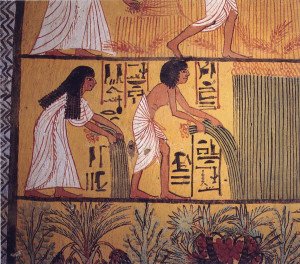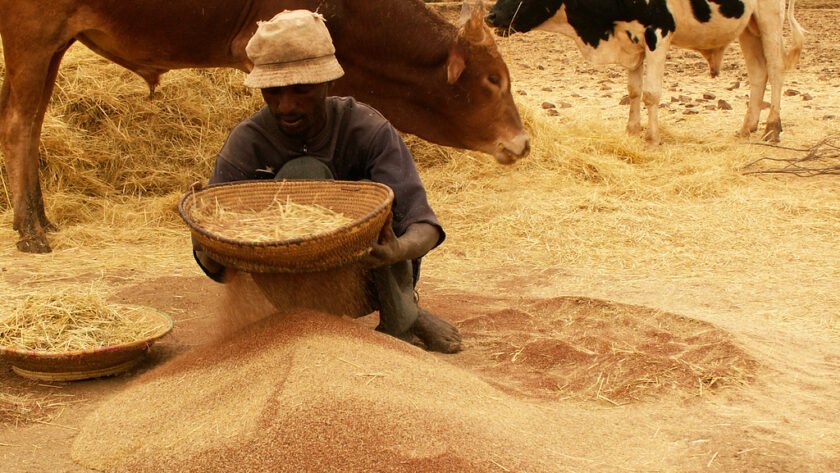Teff is thought to have originated circa 4000 BC. Its seeds were found in an Egyptian pyramid that dates to approximately 3300 BC. In fact, teff was so revered 55 centuries ago, they placed with pharaoh’s in pyramids as their “last food.”
Supposedly, the name Teff is derived from the Amhraic word “Teffa”, which means “lost”, to show that it is something difficult to trace. Again, Teff is the tiniest known grain in the world.
Teff remained an East African secret for centuries, and became a staple in the Ethiopian diet. Teff is very picky about its growing habitat. In fact, Teff only grows well in the highlands of East Africa. Most attempts to grow Teff elsewhere have failed miserably, and as such, it has not been widely available to the Internatio nal marketplace. Only recently has agricultural science progressed enough that we can grow Teff in selected other climates. In fact, is has only been a few years since an appropriate European cultivation climate was first discovered, and Teff is being produced successfully in Spain for the first time.
nal marketplace. Only recently has agricultural science progressed enough that we can grow Teff in selected other climates. In fact, is has only been a few years since an appropriate European cultivation climate was first discovered, and Teff is being produced successfully in Spain for the first time.
According to Perdue University: “Teff is an annual grass crop and harvested for grain in Ethiopia. Teff flour is preferred in the production of enjera, a major food staple in Ethiopia. Teff is also grown on a limited basis for livestock forage in other parts of Africa, India, Australia and South America. In the U.S. small acreages of teff are grown for grain production and sold to Ethiopian restaurants (Carlson, Idaho) or utilized as a late planted livestock forage.” (Please see our Availability Section for more information on current supplies.)
Teff continues to form the base of the East African diet to this day. It is revered for its taste, its shelf life, and its nutritional value. It contains 11% protein, 80% complex carbohydrates, and 3% fat. It’s also an excellent source of essential amino acids, including lysine, an amino acid often missing in whole grains. Teff is a fantastic source of fiber iron, calcium, potassium, and other essential minerals.
Through a new partnership, Teff is finally becoming available in other parts of the world. Thanks to European cultivation, we can now introduce Teff to the Western world. We have managed to source a consistent supply so that Westerners can start taking advantage of all this superfood has to offer. Finally, the rest of the world can begin discovering the best of the ancient grains.
Click here for more about the nutritional value of this super food
Source: http://www.teff-international.com/history-teff.htm




